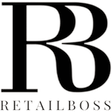Global consumers are tightening budgets on everyday essentials while strategically splurging on experiences and joy-driven purchases, according to Deloitte’s latest ConsumerSignals report. The study, tracking over 15 countries, reveals a nuanced picture of financial resilience and restraint as households navigate persistent inflation and economic uncertainty.
Financial Well-Being Declines Amid Inflation Concerns
Deloitte’s Financial Well-Being Index (FWBI) dipped to 102.4 in February 2025, down from 103.1 in January, marking the lowest level since mid-2024. This decline reflects growing anxiety over rising costs, with 68% of consumers globally concerned about price hikes for groceries, utilities, and housing. Notably, 74% of low-income households reported cutting back on nonessential spending, compared to 52% of high-income groups.
Spending Intentions Highlight Frugality
The Spending Intentions Index, which tracks estimated monthly expenditures, shows:
- Non-discretionary spending: Up 5.3% year-over-year (groceries, healthcare, transportation).
- Discretionary spending: Down 2.1% (apparel, electronics, home goods).
- Splurge categories: Dining out (+8%), entertainment (+6%), and leisure travel (+9%).
“Consumers are adopting a ‘split-brain’ strategy,” says Deloitte lead analyst Clara Mendez. “They’re scrimping on staples to afford small luxuries that boost morale—like meals out or weekend trips.”
Retail: Food Frugality Intensifies
The Food Frugality Index (FFI) hit 112.7 in March 2025, its highest level since tracking began in 2022. Key behaviors include:
- 72% buying in bulk to save costs.
- 65% opting for store-brand items over name brands.
- 58% reducing meat consumption due to price sensitivity.
Despite this, 41% of consumers splurged on premium snacks or gourmet items in the past month, often citing “treating myself” as the primary motivator.
Travel and Hospitality: Cautious Optimism Returns
Leisure travel demand shows resilience, with 63% of respondents planning trips in the next three months. However, cost-saving strategies dominate:
- 55% booking budget accommodations.
- 48% prioritizing off-peak travel periods.
- 36% using loyalty points to offset expenses.
Airfare spending intentions rose 12% year-over-year, though 44% of travelers now prioritize shorter, regional trips over international destinations.
Automotive: Electric Vehicles Gain Traction
Electric vehicle (EV) purchase intent reached 28% in Q1 2025, up from 22% in 2024. Key drivers include:
- Environmental concerns: 39% of potential EV buyers.
- Fuel price volatility: 33%.
- Government incentives: 28%.
Meanwhile, hybrid work models continue to reshape mobility needs. The average daily driving distance fell to 22 miles (from 27 in 2022), with remote workers logging just 12 miles weekly.
The Joy Economy: Strategic Splurging
While frugality dominates essentials, discretionary “joy purchases” are thriving:
- Top splurge categories: Restaurant meals (32%), beauty products (24%), concert tickets (19%).
- Drivers: Emotional satisfaction (57%), social media influence (34%), limited-edition drops (29%).
Luxury brands like Louis Vuitton and Gucci report strong sales of small leather goods and accessories under $500, as consumers seek affordable indulgences.
Regional Variations
- North America: 71% concerned about inflation, highest among regions.
- Europe: EV intent peaks at 34% in Germany and Norway.
- Asia-Pacific: Travel spending intentions up 18%, led by Japan and South Korea.
Future Outlook
Deloitte projects cautious consumer optimism through 2025, with spending growth concentrated in value-driven retail, localized travel, and sustainable products. As Mendez notes, “The era of ‘mindful consumption’ is here. Brands that align with pragmatic yet pleasure-seeking shoppers will thrive.”

















